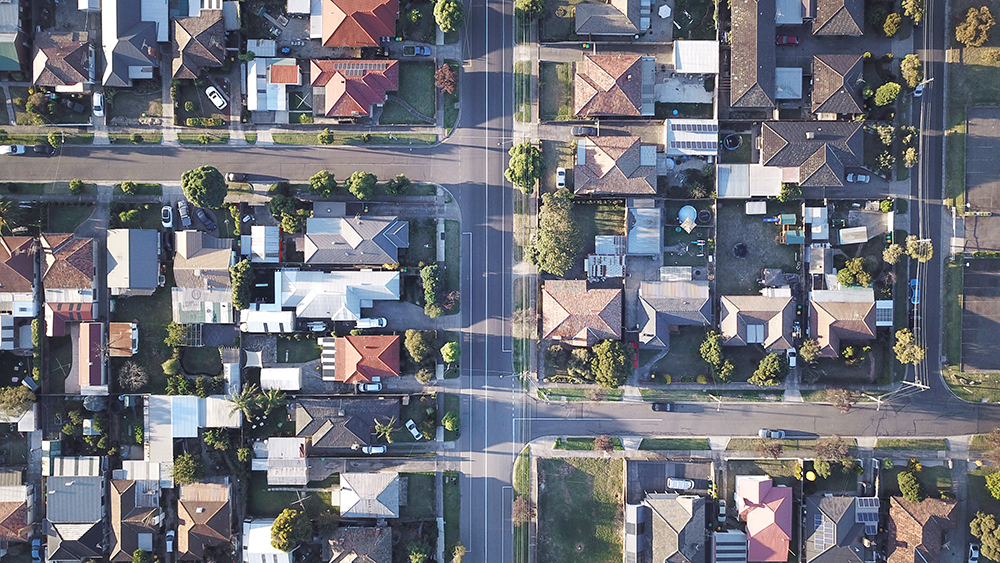Bye-bye big city… The trends driving people into the suburbs and beyond.
Many attribute the growing number of Australians leaving our capital cities and inner suburbs for outer suburbs and regional Australia to the COVID19 pandemic. However, the reality is that this is a long-evolving trend.
Whilst there is no doubting the role that COVID19 and the resulting lockdowns in our cities and the rise of our new remote working reality have perhaps accelerated these trends, the pattern was established long before the word ‘coronavirus’ entered the public conscience.
So, why are people looking further afield?
What is driving this internal migration to our regional centres?
More importantly, what does this mean for property investors and developers?
We thought we’d tackle the subject head-on and offer some of our insights into why this is happening and the opportunities that it creates.
The long-term trends: What census data tells us.
With 15% of the population moving their residence inside Australia in the year leading up to the 2016 Census and 39% changing their address in the five years leading up to the Census, Australia is one of the world’s most mobile societies.
7.9% of individuals move domestically per year on average worldwide, and 21% migrate at least once every five years.
The evidence suggests that Australia ranks in the top fifth of nations.
The 2016 Census data showed that internal migration is a highly selective process, with significant disparities in migration levels across people of various characteristics, particularly age.
Internal migration in Australia peaks among young adults, as it does in other areas of the globe, reflecting the various changes accompanying the transition to adulthood.
It decreases as people become older, with a minor increase around retirement.
Another factor that attributes to the high mobility of Australians is the falling rate of house ownership, with renters being more mobile than homeowners.
The rise of concepts such as ‘rentvesting’, where people rent where they want to live and buy properties where they can afford, also plays a role in these trends.
Of course, it should be noted that whilst Australians are highly mobile, the long-term trends do not necessarily point to people fleeing the cities. Whilst regional centres have been seeing a steady increase in inward migration, the populations of our capital cities have grown long-term, and most interstate moves take people from one capital city to another.
In Australia, population growth is concentrated in the outer suburbs, inner cities, certain urban infill regions, and along the coast, with capital cities accounting for the majority of the country’s overall population increase.
As we will learn below, however, COVID19 has undoubtedly led to a greater rate of regional migration, particularly in Victoria.
Short-term factors: How COVID19 is accelerating long-term trends
Net interstate migration has dropped from a peak of 404,000 people in June 2019 to a low of 354,000 people in December 2020 since the start of the COVID-19 epidemic. Interstate migration has begun to pick up, with 371,000 individuals relocating across state lines in the year leading up to March 2021. In the March quarter of 2021, 104,000 people moved interstate, the greatest number of movements in a March quarter since 1996.
Despite this, residents who left Melbourne in the March quarter of 2021 were most likely to settle in rural Victoria (44,100 individuals), but there were also considerable flows to New South Wales (19,900 people) and Queensland (13,900 people) (20,300 people). The distribution of departures from Melbourne follows previous tendencies. However, the rise in departures from Melbourne is the most significant since the data began.
Why do people move?
Several polls monitor people’s reasons for relocating. While these motivations may be linked to age and life events, the survey results show the variety of socioeconomic and personal factors that impact a choice to relocate.
Housing is the most prevalent cause for relocation, accounting for around 51% of all movements recorded.
Moving to a larger home, downsizing, or the end of a rental agreement are all examples. These transfers, on the other hand, generally take place inside a city or area rather than between cities, regions, states, or territories.
Family reasons are the second most common cause for relocation, accounting for 22% of all reported movements. Two examples are the termination of a relationship or relocating to be closer to the family.
When moving for work, comprehending travels across larger distances or interstate becomes vital. When it comes to interstate migration, the top claimed reasons for moving are family reasons (about 35%), followed by job reasons (nearly 35%).
People are motivated to relocate to new states and territories for a variety of reasons. People move to New South Wales for a variety of reasons, including family and career prospects. Employment possibilities account for a substantially bigger share of migrations in the Northern Territory, while familial reasons prevail in Tasmania.
What does this all mean for property?
The data and trends indicate that people move houses for housing and family reasons more than any other.
Employment is a factor, but with more and more employers open to – and perhaps even encouraging – remote working options, it is possible that this could be even less of a factor in the future.
The Australian Families Survey: Towards COVID Normal discovered that 67 per cent of employed survey respondents worked from home sometimes or constantly, compared to 42 per cent prior to COVID.
So, what does this tell us?
It tells us that when it comes to looking for a new home, people are much more concerned with size, space and amenity and far less concerned with being in the city’s heart.
This creates an opportunity for property developers to identify and obtain undervalued sights on the city fringes and in regional areas of Australia and to create homes that are fit for the modern Australian families of the near future.
The data and trends suggest that families looking to upsize will be more and more willing to look outside of the inner and mid-suburbs to find a home with the space they need for their families to live comfortably.
At Kirwan Group, we assist property developers and investors with getting ahead of the trends and identifying undervalued opportunities.
With services and expertise covering everything from site selection to funding to construction, we help our clients create stunning, innovative properties that stand the test of time and deliver magnificent yields.
Contact us today to learn more about the opportunities beyond our capital cities.

